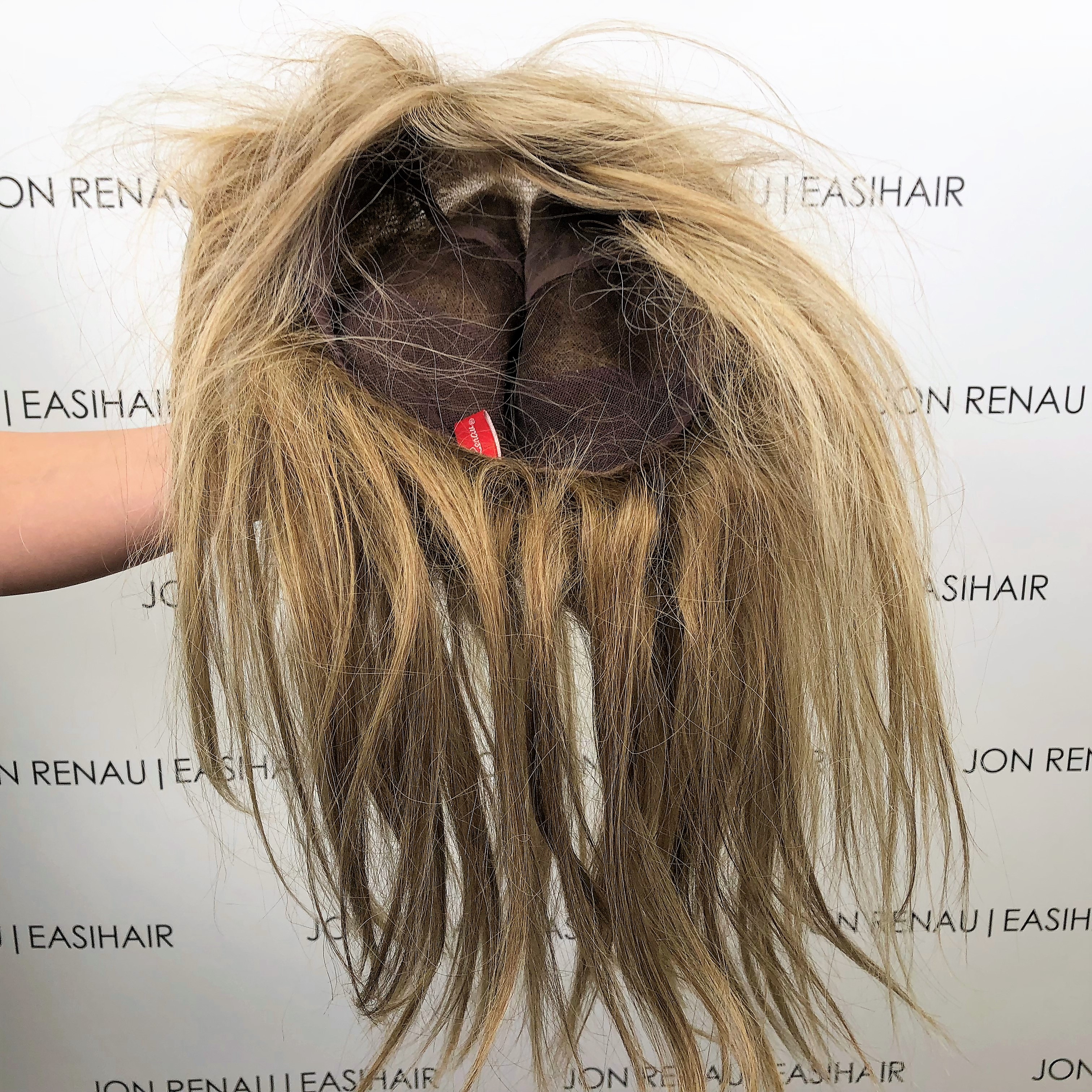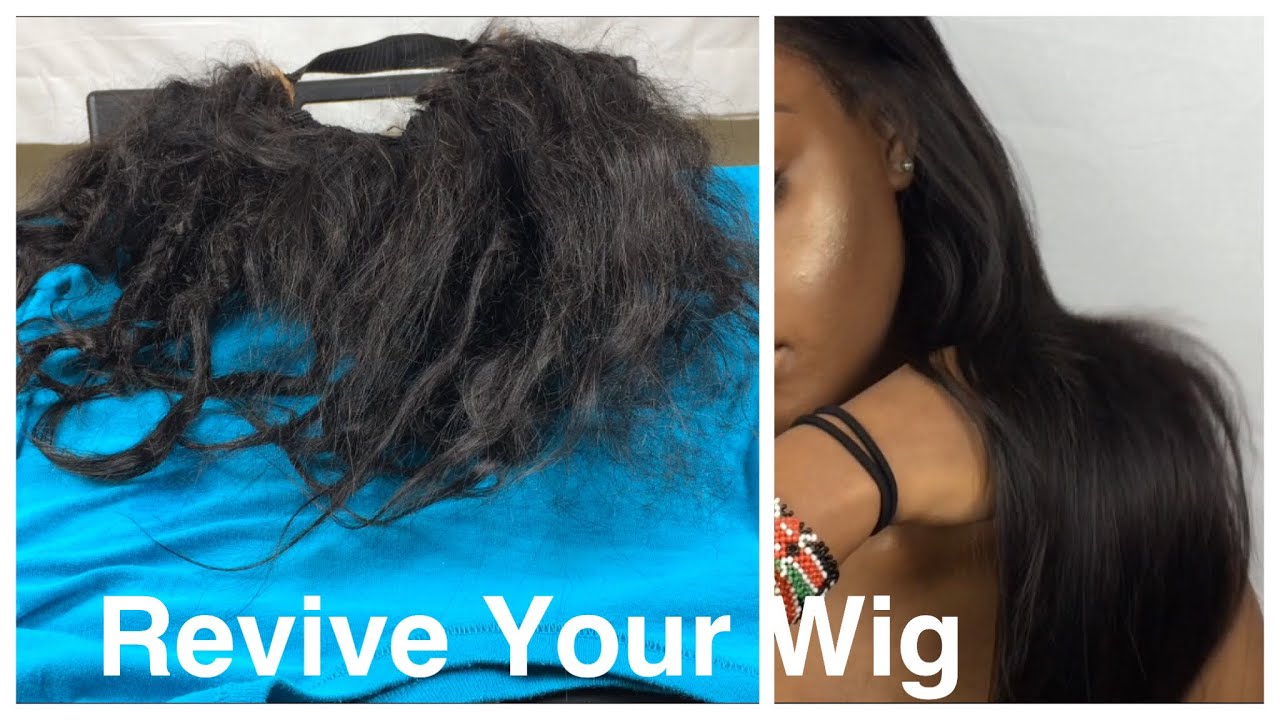Are you struggling with dry ends on your human hair wig? Don’t worry, we’ve got you covered! Human hair wigs are a fantastic addition to anyone’s hair collection, offering endless possibilities for styling and a natural appearance that is hard to beat. However, just like natural hair, wigs can also suffer from dryness, which can lead to frizz and a lackluster appearance. In this article, we will explore some effective tips and techniques to fix dry ends on your beloved human hair wig, so you can keep rocking your perfect hairstyle with confidence.
1. Understanding Dry Ends on Human Hair Wigs
1.1 What Causes Dry Ends on Human Hair Wigs?
Dry ends on human hair wigs can occur due to a variety of reasons. One common cause is excessive heat styling, such as using curling irons or straighteners without proper heat protection. This heat can strip the moisture from the wig, leaving the ends dry and brittle. Another cause is insufficient moisturizing and conditioning. Without regular and proper care, the hair strands can become dehydrated, leading to dry ends. Additionally, exposure to harsh environmental factors like sun, wind, and pollution can contribute to dryness.
1.2 Why Should You Fix Dry Ends on a Human Hair Wig?
Fixing dry ends on a human hair wig is crucial for maintaining its overall health and appearance. Dry ends not only look dull and unattractive, but they can also lead to further damage, such as split ends and breakage. By addressing dry ends, you can revive the wig’s natural luster, improve its texture, and extend its lifespan. It’s essential to give proper attention to the ends as they are the oldest part of the hair and require extra care to keep them moisturized and healthy.
2. Prevention: Caring for Your Human Hair Wig
2.1 Proper Washing and Conditioning
One of the essential steps in preventing dry ends on a human hair wig is to establish a proper washing and conditioning routine. Begin by using a gentle shampoo specifically formulated for human hair wigs. Avoid harsh or sulfate-based shampoos as they can strip the natural oils from the hair. After shampooing, apply a moisturizing conditioner from mid-length to ends, focusing on the dry areas. Leave the conditioner in for a few minutes before rinsing thoroughly with cool water.
2.2 Avoiding Excessive Heat Styling
To prevent dry ends, it’s crucial to limit the use of heat styling tools on your human hair wig. Excessive heat can cause the hair strands to become dry and brittle over time. If you do need to style with heat, always use a heat protectant spray or serum to minimize damage. Set the styling tools to a lower heat setting and avoid prolonged exposure. Opt for heatless styling techniques whenever possible, such as braiding or using rollers.
2.3 Protecting the Wig when Sleeping
Proper nighttime care is essential for preventing dry ends on your human hair wig. Before going to bed, gently detangle the wig with a wide-toothed comb or brush and loosely braid or tie it in a low ponytail to minimize friction and tangles. Consider wrapping the wig with a satin or silk scarf or using a satin pillowcase to reduce moisture loss and friction while you sleep.
2.4 Using Moisturizing Products and Serums
Regularly using moisturizing products and serums is key to keeping the ends of your human hair wig hydrated and healthy. Look for leave-in conditioners or serums specifically designed for human hair wigs. These products can help retain moisture, reduce frizz, and add shine. Apply a small amount of the moisturizing product to the ends of the wig daily or as needed to keep them hydrated and protected.
2.5 Regular Trimming to Prevent Split Ends
To prevent dry ends from progressing into split ends, it is advisable to schedule regular trimming sessions for your human hair wig. Just like natural hair, trimming the ends every few months will help remove any damaged or split ends and promote overall hair health. This step is particularly important for preventing further breakage and maintaining the wig’s overall appearance.
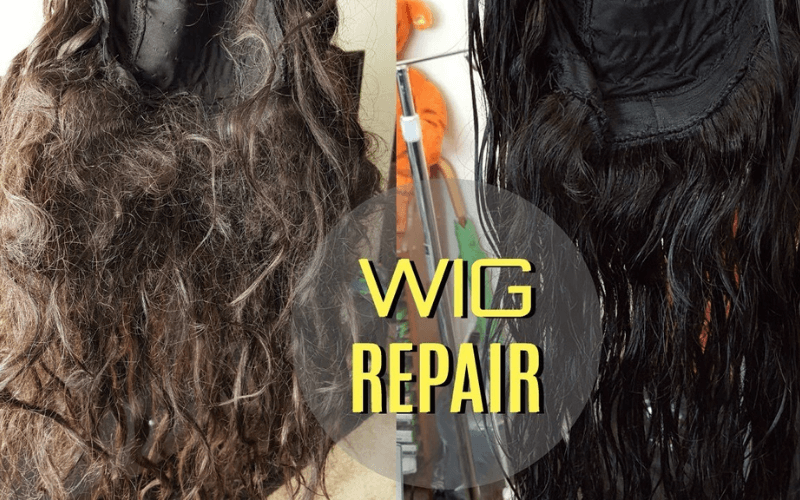
3. Home Remedies to Treat Dry Ends on a Human Hair Wig
3.1 Deep Conditioning Treatment
A deep conditioning treatment can work wonders in treating dry ends on a human hair wig. Apply a generous amount of deep conditioner to the ends of the wig and gently massage it in. Cover the wig with a shower cap or plastic bag and let it sit for 20-30 minutes to allow the conditioner to penetrate deeply. Rinse thoroughly with cool water and allow the wig to air dry.
3.2 Hot Oil Treatment
Hot oil treatments are excellent for nourishing and moisturizing dry ends. Choose a natural oil such as coconut oil, olive oil, or argan oil and warm it slightly. Apply the warm oil to the ends of the wig and massage it in gently. Cover the wig with a shower cap or plastic bag and let it sit for 30-60 minutes. Rinse thoroughly and follow up with a gentle shampoo and conditioner.
3.3 Coconut Oil and Aloe Vera Mask
Combining the moisturizing properties of coconut oil with the soothing benefits of aloe vera can create an effective mask for treating dry ends. Mix equal parts of melted coconut oil and pure aloe vera gel in a bowl. Apply the mixture to the ends of the wig and leave it on for 30 minutes. Rinse thoroughly and follow up with your regular conditioning routine.
3.4 Apple Cider Vinegar Rinse
An apple cider vinegar rinse can help restore the pH balance of the hair and promote moisture retention. Dilute apple cider vinegar with water in a ratio of 1:3. After shampooing the wig, pour the diluted vinegar mixture over the ends, gently massaging it in. Let it sit for a few minutes before rinsing thoroughly with cool water. The vinegar smell will dissipate as the wig dries.
3.5 Leave-in Conditioner Application
Using a leave-in conditioner as part of your daily haircare routine can provide ongoing moisture and protection for the ends of your human hair wig. After washing and conditioning the wig, apply a small amount of leave-in conditioner to the ends, focusing on the dry areas. Gently comb through the hair to ensure even distribution. Leave the conditioner in and style as desired.
4. Professional Solutions for Dry Ends on Human Hair Wigs
4.1 Wig Spa or Salon Treatment
If you’re looking for a professional solution to treat dry ends on your human hair wig, consider a wig spa or salon treatment. These specialized treatments are designed to deep condition and rejuvenate the wig, leaving it soft, silky, and hydrated. Professional wig technicians will use high-quality products and advanced techniques to ensure the best results. Schedule an appointment with a reputable wig spa or salon to discuss your specific needs.
4.2 Professional Rejuvenation Services
Another option for addressing dry ends on a human hair wig is to explore professional rejuvenation services. These services go beyond basic haircare and focus on repairing and revitalizing damaged wigs. Techniques such as steam treatments, protein treatments, and specialized conditioning can restore moisture and health to dry ends. Consult with a wig expert or stylist who specializes in wig rejuvenation to determine the best course of action for your wig.
4.3 Consultation with Wig Experts
If you’re uncertain about the best approach to fix dry ends on your human hair wig, seeking a consultation with wig experts can provide valuable insights and guidance. Wig experts have in-depth knowledge of various wig types, textures, and maintenance techniques. They can assess the condition of your wig, identify the underlying causes of dryness, and recommend appropriate solutions based on your wig’s specific needs. Reach out to reputable wig stores or professionals who offer consultation services to ensure you receive accurate and tailored advice.
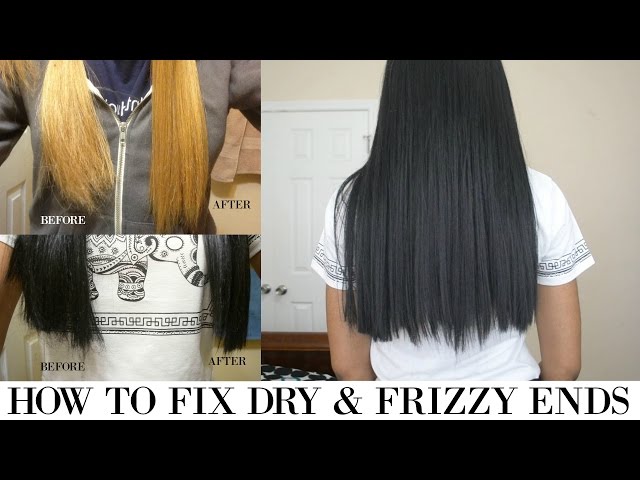
5. How to Prevent Dry Ends on a Human Hair Wig in the Future
5.1 Regular Moisturizing and Conditioning
To prevent dry ends on your human hair wig in the future, it’s essential to make moisturizing and conditioning a regular part of your haircare routine. Follow the proper washing and conditioning techniques mentioned earlier and ensure you choose products that are specifically formulated for human hair wigs. Moisturizing sprays and leave-in conditioners can also be used daily to keep the ends hydrated between washes.
5.2 Limiting Heat Styling
As mentioned earlier, excessive heat styling can contribute to dry ends on a human hair wig. To prevent this, try to limit the use of heat styling tools or opt for lower heat settings whenever possible. Explore heatless styling options that achieve the desired look without subjecting the wig to excessive heat. This will help retain moisture and prevent the ends from becoming dry and brittle.
5.3 Protective Hairstyles and Overnight Care
Protective hairstyles and proper overnight care can go a long way in preventing dry ends on your human hair wig. When not in use, consider storing the wig in a braid or twist to protect the ends from rubbing against each other or other surfaces. Satin or silk scarves or pillowcases can also be used to minimize friction and help retain moisture.
5.4 Trim Regularly
Regular trimming is a crucial step in preventing dry ends from progressing into split ends and further damage. Schedule regular trimming sessions every few months to remove any dry or split ends and promote healthy hair growth. Trimming will also help maintain the overall shape and style of your wig. If you’re not confident in trimming the wig yourself, consult with a professional wig stylist to ensure a precise and well-executed trim.
6. Proper Storage and Maintenance of Human Hair Wigs
6.1 Using a Wig Stand or Mannequin Head
Proper storage of your human hair wig is essential for its longevity and overall health. When not in use, place the wig on a wig stand or mannequin head to help maintain its shape and prevent tangling. This will also allow air to circulate around the wig, promoting proper ventilation and preventing moisture buildup.
6.2 Storing in a Breathable Bag or Box
If you need to store your human hair wig for an extended period, consider using a breathable wig bag or box. These specially designed storage solutions allow air to flow in and out while protecting the wig from dust and other environmental factors. Avoid storing the wig in plastic bags or airtight containers, as this can lead to trapping moisture and causing mold or odor.
6.3 Avoiding Excessive Heat or Sun Exposure
Proper maintenance of your human hair wig includes protecting it from excessive heat or sun exposure. Avoid storing the wig near heating sources or in direct sunlight, as these can cause the hair to become dry and brittle. If you need to wear the wig in hot weather, consider using a UV protection spray to shield it from harmful sun rays.
6.4 Regular Cleaning to Remove Dirt and Buildup
Regular cleaning is crucial to keep your human hair wig looking and feeling its best. Follow the recommended washing and conditioning routine mentioned earlier, and consider using a clarifying shampoo periodically to remove any dirt, product buildup, or residue. Avoid using excessive force when cleaning the wig and always be gentle to prevent tangling or damaging the hair strands.

7. Understanding the Importance of Quality Human Hair Wigs
7.1 Investing in High-Quality Human Hair Wigs
Investing in a high-quality human hair wig is essential for ensuring its durability, longevity, and overall performance. High-quality wigs are made from carefully selected and processed human hair, resulting in a realistic appearance and superior texture. While they may come with a higher price tag, the investment is worthwhile as they are more durable, easier to style, and provide a more natural look.
7.2 Recognizing the Difference in Hair Origins
When choosing a human hair wig, it’s important to understand and recognize the difference in hair origins. Different hair origins, such as Brazilian, Indian, and European, offer distinct textures and qualities. Research and consider which hair origin suits your preferences and desired hairstyle. Understanding the differences will help you make an informed decision and select a wig that aligns with your needs and expectations.
7.3 Choosing the Right Wig Cap Construction
The wig cap construction plays a significant role in the overall comfort and longevity of your human hair wig. There are various cap designs available, such as lace fronts, full lace caps, and monofilament caps. Each offers different benefits and features, such as a natural-looking hairline, breathability, and flexibility in parting. Consider your lifestyle, preferences, and the level of comfort you desire when selecting the appropriate cap construction for your wig.
7.4 Researching and Selecting a Reputable Supplier
To ensure the quality and authenticity of your human hair wig, it’s crucial to research and select a reputable supplier. Look for suppliers with positive customer reviews, established reputations, and a commitment to quality. Avoid purchasing from unknown or unreliable sources, as you may end up with a low-quality wig that doesn’t meet your expectations. A trusted supplier will provide accurate information about the wig’s origin, construction, and care instructions, helping you make an informed purchase.
8. Seeking Professional Advice for Damaged Human Hair Wigs
8.1 Consultation with Wig Experts
If you’re dealing with a damaged human hair wig or experiencing persistent issues with dry ends, seeking professional advice is advisable. Consultation with wig experts can provide valuable insights and customized solutions for your specific situation. Wig experts have in-depth knowledge of various wig types, maintenance techniques, and repair services. They can assess the condition of your wig, diagnose any underlying issues, and recommend appropriate treatments or repairs.
8.2 Professional Repair Services
In cases of severe damage or extensive dryness, professional repair services may be necessary. Professional wig technicians are skilled in repairing and rejuvenating damaged human hair wigs. They can address issues such as dry ends, split ends, tangling, or shedding. Repair services may include deep conditioning treatments, protein treatments, wig cap repairs, and strand reinforcement. Consult with a reputable wig salon or technician to discuss the available repair options for your wig.
8.3 Knowing When to Replace the Wig
While professional repairs can extend the lifespan of a damaged human hair wig, there may come a point where replacement is the best option. If the wig is heavily damaged, has significant shedding or breakage, or no longer meets your desired style or quality standards, it may be time to invest in a new wig. Consult with a wig expert for an honest assessment of your wig’s condition and guidance on whether repair or replacement is the most suitable course of action.
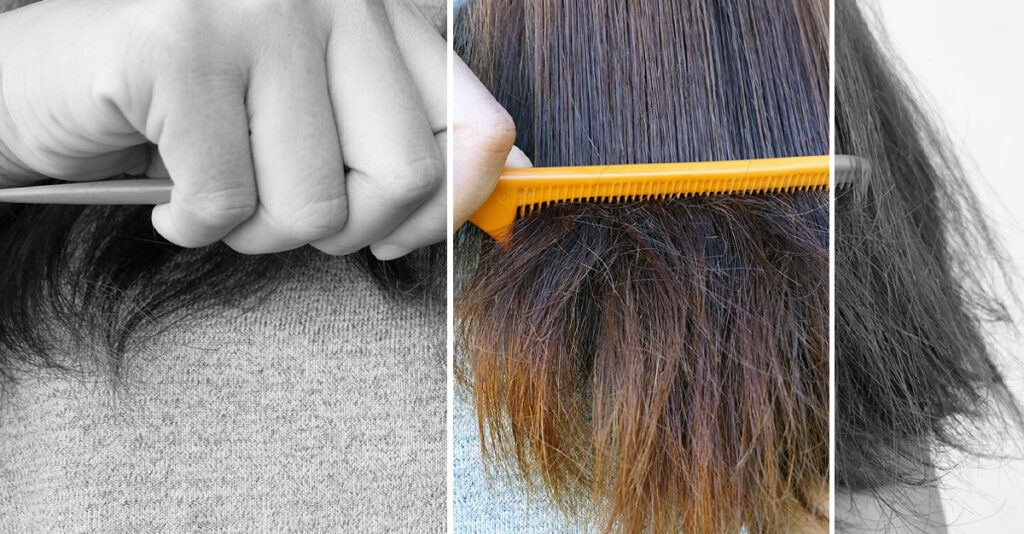
9. Dealing with Humidity and Climate Control for Human Hair Wigs
9.1 Using Anti-Humidity Products
Humidity can pose challenges for human hair wigs, as it can cause frizz and moisture absorption. To combat the effects of humidity, consider using anti-humidity products specifically formulated for human hair wigs. These products create a protective barrier, preventing excess moisture from penetrating the hair strands. Apply the anti-humidity product before stepping out in humid conditions to keep your wig looking sleek and frizz-free.
9.2 Adjusting Hair Care Routine for Different Climates
Different climates may require adjustments to your human hair wig’s hair care routine. In hot and humid climates, you may want to shampoo and condition your wig more frequently to remove excess oil and sweat buildup. Use lightweight and non-greasy leave-in conditioners or serums to keep the hair moisturized without adding excess weight. In dry climates, consider using a humidifier to add moisture to the environment and prevent the wig from becoming overly dry.
9.3 Avoiding Excessive Exposure to Moisture
While it’s important to maintain moisture balance in your human hair wig, excessive exposure to moisture can lead to frizz, tangling, and mold. Avoid activities such as swimming, showering, or heavy perspiration without proper protection, such as a swim cap or shower cap. If the wig does get wet, gently squeeze out the excess water and allow it to air dry thoroughly before styling or storing.
10. Everyday Care Tips for Maintaining Healthy Ends on a Human Hair Wig
10.1 Brushing and Detangling Gently
To maintain healthy ends on your human hair wig, practice gentle brushing and detangling techniques. Start by using a wide-toothed comb or wig brush with soft bristles to remove any tangles or knots. Begin at the ends and work your way up, using short and gentle strokes to minimize pulling or stretching the hair. Avoid brushing or combing when the wig is wet or damp, as this can cause breakage.
10.2 Using Heat Protectant Products
Whenever heat styling your human hair wig, it’s essential to use heat protectant products to shield the hair from excessive heat damage. Apply a heat protectant spray or serum to the ends of the wig before using curling irons, straighteners, or hairdryers. The heat protectant creates a barrier between the hair and the styling tool, reducing the risk of dryness, frizz, and breakage.
10.3 Avoiding Chemical Treatments
Chemical treatments, such as coloring, perming, or relaxing, can be damaging to a human hair wig and contribute to dry ends. It’s best to avoid these treatments or consult with a professional wig stylist who specializes in chemically treating wigs. If you do decide to chemically alter the wig, ensure you use gentle and quality products, and follow the instructions provided by the manufacturer.
10.4 Limiting Sun and Environmental Damage
Excessive exposure to the sun’s UV rays and harsh environmental elements can cause dryness and damage to a human hair wig. Whenever possible, limit the wig’s exposure to direct sunlight. If you need to be outside for an extended period, consider wearing a wide-brimmed hat or using a wig cap with UV protection. Protect the wig from environmental damage by avoiding contact with chlorine, saltwater, and pollutants.
In conclusion, fixing dry ends on a human hair wig is essential for maintaining its overall health, appearance, and longevity. By understanding the causes of dry ends and implementing preventive measures, such as proper washing, conditioning, and heat styling practices, you can minimize the occurrence of dryness. Home remedies, professional solutions, and everyday care tips can also help treat and prevent dry ends. Additionally, understanding the importance of quality wigs, seeking professional advice when needed, and adapting to different climates can contribute to maintaining healthy ends. With proper storage, maintenance, and care, human hair wigs can provide endless styling possibilities and solutions for hair loss, allowing you to confidently explore and redefine your look.
